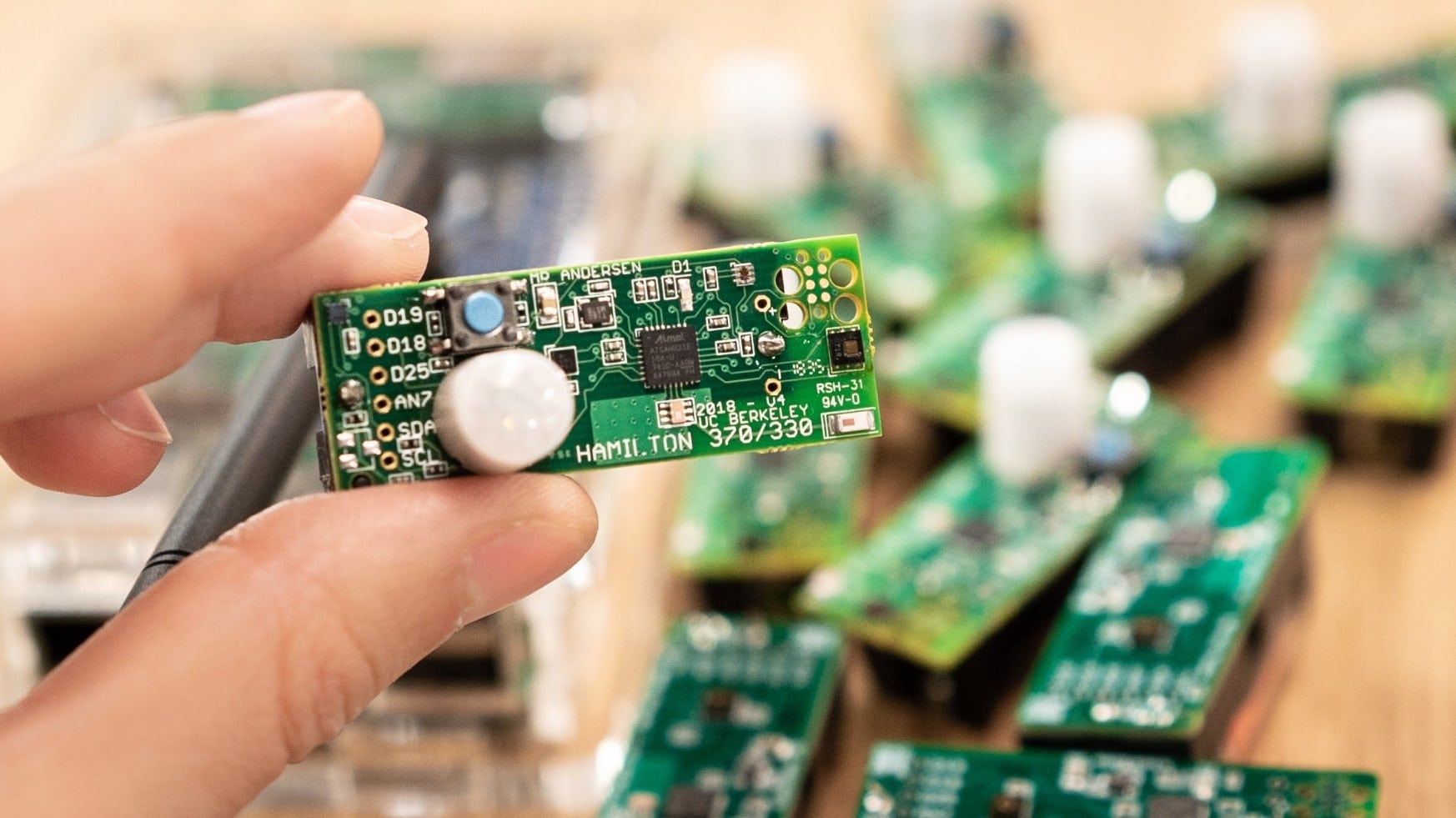Energy Use in Buildings
Hamilton Sensors
This project created and established the technological foundations for secure and easy to deploy building energy efficiency applications, and demonstrated the effectiveness of this foundation. By utilizing pervasive, low-cost wireless sensors integrated with traditional Building Management Systems, consumer-sector building components, and personalized smartphone devices, the Hamilton project’s aim is to reduce energy consumption while improving occupant comfort and satisfaction.
Sensors for improving building performance are rapidly populating the market, driven in part by the drive to reduce greenhouse gas emissions resulting from energy production as well as improve the interior environment for healthy and more productive spaces.
The Hamilton sensor was designed as a low-cost high-performance sensor that is modular and interoperable. The objective of the Hamilton project was to create, evaluate and establish the technological foundations for secure and easy to deploy building energy efficiency applications utilizing pervasive, low-cost wireless sensors integrated with traditional Building Management Systems (BMS), consumer-sector building components, and powerful data analytics.
The project included iterative hardware design, incorporating a high-performance database (BTrDb), creating and iterating the development of secure data middleware (BOSSwave, WAVE/WAVEMQ), working with and pushing the development of an open-source tiny operating system RiotOS, and implementing and improving protocols such as Thread/OpenThread and TCP/IP. The hardware benefited from careful design to drive down the cost; the design included a System-on-a-Chip (SoC), chip antenna, single crystal, and five passive components. Careful design of the operating system created a low-power design to enable a long life with small batteries. The hardware included several sensors: temperature, radiant temperature, relative humidity, magnetometer, accelerometer, and light, with an optional occupancy (Passive InfraRed) sensor.
The project was the basis of several applications, both internal to the research team and other researchers and professionals at other institutions. The research added to the understanding of efficient sensor hardware, secure middleware, time-series data management (high-performance database), efficient communication protocols, and interoperating with applications and building systems. The project showed the technical effectiveness and economic feasibility of creating a low-cost, modular, and easy-to-deploy sensor. Through conversations with multiple end users, the research team discovered that many customers wanted data management and services in addition to the sensors. HamiltonIOT developed packages of sensors, border routers, and data services to provide a seamless “plug-and-play” sensor deployment.

